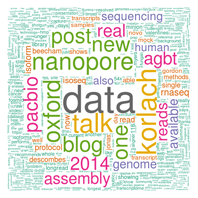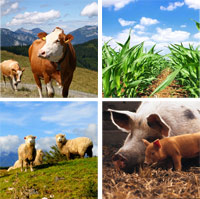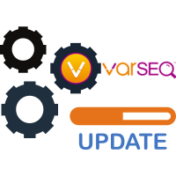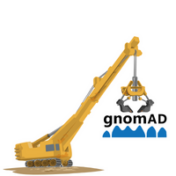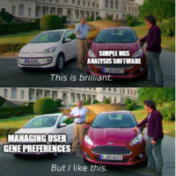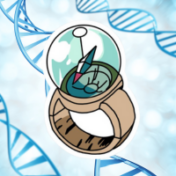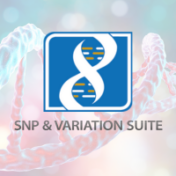In recent months we have been updating our public annotation library to include the most recent versions of existing sources, as well as include new sources. All of these annotation sources are compatible with our three major products, VarSeq, SVS, and GenomeBrowse, and can be used for visualization, annotation, and filtering. dbNSFP NS Functional Predictions 2.8, GHI and dbNSFP Predictions… Read more »
Up until a few weeks ago, I thought variant classification was basically a solved problem. I mean, how hard can it be? We look at variants all the time and say things like, “Well that one is probably not too detrimental since it’s a 3 base insertion, but this frameshift is worth looking into.” What we fail to recognize is… Read more »
On my flight back from this year’s Molecular Tri-Conference in San Francisco, I couldn’t help but ruminate over the intriguing talks, engaging round table discussions, and fabulous dinners with fellow speakers. And I kept returning to the topic of how we aggregate, share, and update data in the interest of understanding our genomes. Of course, there were many examples of… Read more »
SVS 7.6.7 features new tools for filtering sequencing data based on functional predictions and allele frequencies. To complement these new features, new annotations tracks have been uploaded to our data server and are now available for our customers! Below you will find descriptions of the new tools and the related annotations track(s).
Recently we have expanded our annotation track offerings with new human variant frequency catalogs such as the 1000 Genomes Phase 1 Data. Of course, we also curate data for plant and animal genomes – some of which are currently available in our software and some of which will be available in our next release. In this blog post, I will… Read more »
If you have ever worked with NGS variant data, you may have come to realize that the first task at hand is the seemingly simple categorization of your variants into two bins: known and novel. Of course, if you’ve ever worked with NGS variant data, you may have also come to the realization that this step is more complex than… Read more »
In this blog post, we will explore the nuances of variant calling and import in the context of VSPGx. We will discuss the importance of integrating must-call variant definitions into the calling processes and provide guidance on incorporating copy number variants (CNVs) and structural variations (SVs) into your PGx analysis workflow. Must Call Variant Files To ensure the optimal performance… Read more »
We have been building up to the final release of VarSeq 2.6.0 for a couple of weeks now, but we are excited to announce that 2.6.0 is officially available! VarSeq 2.6.0 is an exciting release as this version of VarSeq features the introduction of VSPGx, offering a complete pharmacogenomic workflow, including data import, variant analysis, and report generation. We have… Read more »
Thanks to all of you who were able to attend the live webcast introducing the newest genomic analysis tool within VarSeq, VSPGx! For those of you who could not make it to the live presentation and demonstration, I will fill you in on what we covered. If you would like to watch or re-watch the webcast, you can access the… Read more »
Join Golden Helix at the American College of Medical Genetics and Genomics (ACMG) 2024 conference and discover the latest advances in genetic research. This premier event brings together leading researchers, clinicians, and industry experts to share their insights on cutting-edge topics in medical genetics. Stop by our booth for a live demo of our software, learn about the latest features,… Read more »
We at Golden Helix are thrilled with our recent release of gnomAD v4! The curation of this massive database was a huge undertaking for our development team, but with the addition of new features, we believe it was well worth the wait. This annotation track contains allele frequencies from a more diverse population than ever before, with the addition of… Read more »
The Broad Institute’s release of gnomAD v4 needs no introduction as the data in this release is highly sought after by professionals in the genetics community, and the v4 release has a lot to boast about! The v4 release is roughly five times larger than the v2 and v3 releases combined and includes data from 807,162 total individuals. Naturally, exome… Read more »
Welcome to the exploration of groundbreaking genetic research in ophthalmology. Recent studies have unveiled fascinating insights into the complex interplay between genetics and eye diseases, offering hope and new directions for understanding and treating these conditions. From novel genetic variants linked to microphthalmia and glaucoma to the long-term implications of cataract surgery in childhood, we’re diving into the depths of… Read more »
We are excited to announce the release of our gnomAD v4 annotation tracks for VarSeq. This version of the GnomAD database represents a significant leap forward, including data from an impressive cohort of over 800,000 individuals — a remarkable 5x expansion compared to the previous releases. Notably, this dataset is comprised of two distinct callsets: exome sequencing data from 730,947… Read more »
Today, we will be exploring the indispensable role of GenomeBrowse in your VarSeq workflows. This blog aims to guide you through various customization options, including color preferences, filtering techniques, display modifications, numeric value plotting, and additional tips. I hope to enhance your GenomeBrowse experience and enable you to gain valuable insights into your data. Let’s jump in by talking about… Read more »
Many thanks to those who came to view our most recent webcast, From Panels to Genomes with VarSeq: The Complete Tertiary Platform for Short and Long-Read NGS Data. This was a great opportunity for us to showcase the breadth of our workflows, from short-read to long-read, panels to genomes, singleton analysis to families. In this blog, we would like to… Read more »
There are several contextual factors to consider when analyzing genomic data for NGS analyses. A variant may have divergent impacts depending on which transcript of the gene is being considered, or the impact of a variant could be weighed more or less heavily depending on the disease context. Evidently, the user’s gene preferences are very important, but not all software… Read more »
How long did it take to run coverage regions? Did my colleague update the filter chain like he said he would? Which import options did I use? Where did I save this project? These questions and more can be answered with our little-used VarSeq Log tab. Periodically, our customers come to us with questions in the realm of record keeping,… Read more »
In this blog, we explore the impactful applications of VarSeq in genetic research and diagnostics. Through case studies, we examine its role in diverse conditions like Immune Mediated Thrombocytopenia (ITP), glaucoma, and Cri du Chat syndrome. These studies demonstrate VarSeq’s capability in identifying genetic variants and influencing diagnosis and treatment across various medical scenarios, showcasing its crucial role in advancing… Read more »
Thank you to those who attended our recent webcast on Golden Helix’s SNP & Variation Suite (SVS) and its new capability related to Polygenic Risk Scores (PRS). If you were unable to attend, a recording can be found via this link. For common diseases, PRS can provide a predictive value related to the disease risk at an individual level. By… Read more »

